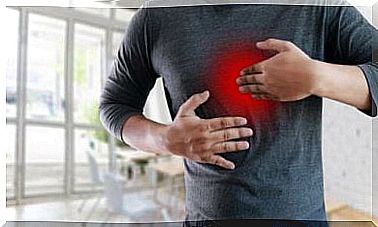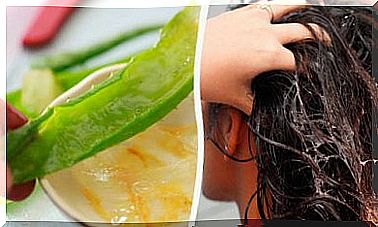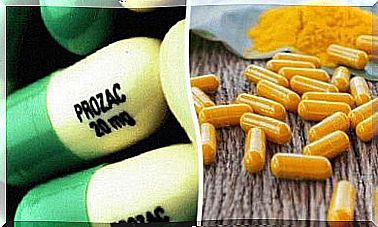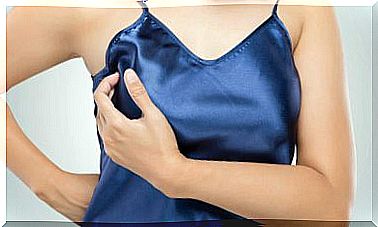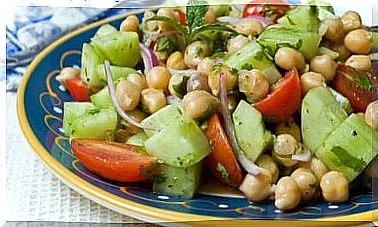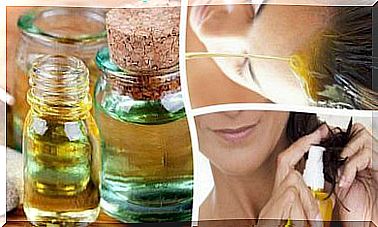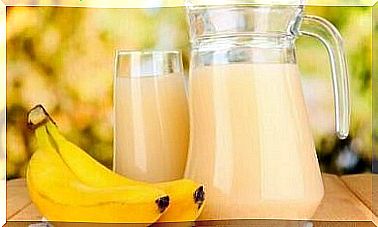6 Homemade Lice Removal Products
The contagious external parasitosis produced by the invasion of lice which are mainly found in the human scalp is called pediculosis. Although this condition does not pose any health risks, it is necessary to prevent it.

Lice are small parasites, 2 to 3 millimeters long, of various colors but usually light and gray tones. They eat the blood of the host in small quantities.
They usually live on the scalp, hair, behind the ears, on the eyebrows, and even on the eyelashes of people.
They are spread by direct contact and, occasionally, when sharing personal items such as beanies, hats or hairbrushes.
Although lice live for almost 28 days, they can multiply quickly by laying 10 eggs per day.
The eggs or nits, in turn, reach adulthood between 12 and 14 days. If the lice are not treated quickly, they can multiply, since the process is repeated every three weeks.
What are the symptoms ?
- A tingling sensation or noticeable movement in the hair
- Itches
- Difficulty falling asleep
- Eczema or skin lesions produced by persistent scratching
Is it dangerous to have lice?

To date, there are no known cases of disease transmission by lice, therefore, they are not considered a threat to public health.
However, scratching the affected area can produce secondary infections.
What should we do when we have lice?
Although they do not represent a serious health problem, they do require treatment that includes family members, people close to you, and so on.
Unfortunately, there is no approved drug on the market that eliminates lice eggs (nits) in their entirety.
Indeed, it is recommended to use the drugs as alternative treatments.
That’s why, in Improve Your Health, we share with you some of the most effective techniques, made with homemade products, in case you need them.
1. Eucalyptus oil
Eucalyptus is a tree native to Australia, which is currently cultivated around the world. We use its leaves and oil produced by distillation. In addition, its composition allows its application for a dozen uses.
- Among these, its use as an antiseptic and astringent for wounds stands out. For this reason, its use can help reduce the effects of lice on the skin.
2. Olive oil
This vegetable oil, with multiple benefits for the human body, can help during the treatment of lice.
- In this case, viscosity is its main quality, as it deprives the lice of oxygen. This way the lice cannot breathe and die of suffocation.
3. White vinegar

This liquid comes from the acetic fermentation of alcohol by means of bacteria.
Among its components is acetic acid, which helps dissolve chitin from the protective lining of nits, which are used to adhere to hair.
We can combine the two previous remedies and make a bath with vinegar and olive oil.
Ingredients
- 2 cups of white vinegar (500 ml)
- 2 cups of olive oil (500 ml)
Utensils
- Plastic kitchen paper
- A metal comb
How to use it
- Heat the vinegar to a suitable temperature so as not to burn the infested person.
- With the head previously moistened, soak the hair in hot vinegar and massage for a few minutes, to cover as much hair as possible.
- Take the hair and wrap it in kitchen plastic. Hold it as best as possible around your head so that the smell and the effects of the vinegar work.
- The rest time is one hour.
- After the indicated time, remove the plastic and rinse the hair with hot water.
- Heat the olive oil to an acceptable temperature, and soak the hair in it.
- Do the same with the plastic wrap and let the oil work for an additional hour.
- Then remove the plastic and, with the metal comb, remove the nits and lice from the hair thoroughly in sections.
- Once all the nits have been removed, wash the hair normally with the shampoo of your choice, as many times as you deem necessary.
Note: Some people only perform this procedure with vinegar.
4. Tea tree oil
It is considered to be one of the best products to get rid of lice.
Coming from the Malaleuca Alternifolia bush native to Australia, this oil has been used since Antiquity to treat skin problems.
It has antiviral, antibacterial, antifungal and antiseptic properties, which are highly valued functions when it comes to preventing lice infestation.
5. Parsley
This plant, native to small islands in the Mediterranean, is widely used for the many medicinal properties it has.
Its beta-carotene intake promotes healing, as it speeds up the process of wound skin repair.
Some of the volatile oils it presents provide antibacterial and antifungal qualities, which help with skin infections and relieve irritated skin.
It also helps eliminate lice, reduces irritation from bites and regulates scalp pH.
6. Lavender oil
Lavender is a medicinal plant with a wide variety of uses that can be found in the form of essential oil. It can be used as an analgesic, cell regenerator, sedative …
However, one of its main effects against lice is its odoriferous property, which is used as a repellant.
- Its application to the scalp creates a kind of shield against future invasions.
Other methods
The fine comb
Also known as the metal comb, this is an easily accessible tool designed to keep nits and lice trapped in its fine bristles.
This comb is mainly used with a wet head.
- The procedure is most effective when you apply care and alcohol beforehand to the hair, because its action allows the comb to slide more easily, causing less damage to the hair.
Avoid direct contact
Avoid face-to-face contact in activities that require contact, as well as in sandboxes or swimming pools.
Clothes
It is recommended to wash the clothes that the infested person has used during the days before the start of treatment with hot water, and to dry them or iron them.
Lice and eggs cannot tolerate temperatures above 53.5 ° C.
In case the clothes require dry cleaning, bring them to be cleaned or store them for two weeks in sealed plastic bags to prevent the spread of lice.
Personal items
We must avoid sharing:
- Plush toys
- Hats
- Towels
- Products for personal hair care
Clean furniture and floors
It is necessary to avoid that, in the different areas of the house, we can find the hair of the infected person, because it can contain nits.
Do not lie on furniture with which the person may have had recent contact.
Lice survive for 1 or 2 days outside of humans.
In the case of nits, away from human temperature, they cannot hatch, but it will take a week for them to die if they do not encounter similar temperatures.
Note: Avoid spraying aerosols, as they can be toxic.
As you will have seen, treatments to end pediculosis require thoroughness and time. However, these alternatives are practical and natural.
We hope you find these recommendations helpful.
